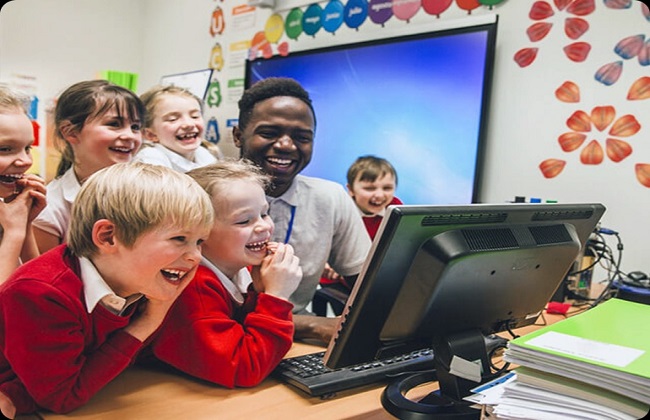
From my experience of 25 years of teaching and working as a principal in educational institutions with national and international curriculum, I realized that any educational institution; Be it a school, college, madrasa or university, be it a sterile classroom environment filled with rows of desks, teaching on PowerPoint or smart boards, teachers arriving and departing classes on time or conducting examinations properly, it’s alright, but there may not be enough in ensuring a good education there, rather an incomplete picture of education may also be there. At the heart of a truly rich learning environment is a strong teacher-student relationship. As these relationships honor and enrich teachers, trainers and mentors, they also inspire a student’s holistic development. Teacher-student relationships have an impact on students that can resonate throughout their lives. In the depth of this relationship, the basic professional practice of the teacher is discussed in today’s article:
It is the teacher’s responsibility to build trust and connection beyond the textbook. A good teacher is not just a dispenser of knowledge; He is a guide, a mentor and a source of encouragement. He creates a beautiful classroom environment built on trust and respect, where students feel comfortable taking risks, asking questions, and expressing themselves freely. This mental safety net helps students explore their full potential intellectually and emotionally.
Teachers are the powerhouse of curiosity, stimulation and inspiration. Teachers who make genuine connections with their students have an extraordinary ability to instill a passion for learning. Their enthusiasm and dedicated service inspire students to delve deeper into what they know and understand and discover the joy of lifelong exploration. This intrinsic motivation fosters a student’s desire to learn independently and become a self-directed learner. This is a skill crucial to student success in any field. The teacher uses humor in the classroom, voice modulation, gestures, facial expressions and many real-life examples to stimulate students’ enthusiasm. Bracing up curiosity and motivation is a key determinant, which sustains teacher-student relationships in the long run.
Teachers nurture growth, self-esteem and confidence in students. A teacher uses all elements in his collaboration to reflect the unique strengths and talents of each student. Good teacher-student relationships help bring individual attention to students, celebrate their achievements and provide constructive feedback. A teacher enables his students to develop self-esteem and confidence. This positive reinforcement encourages resilience, which helps students navigate challenges and adapt to new situations.
A teacher leaves a lasting impression of his teaching on the heart of every student. A teacher can shape a fuller life by mirroring his own life in his students. A dedicated teacher’s impact extends far beyond the classroom walls. Teachers who develop genuine relationships with their students leave a lasting impression. They become role models, instilling valuable life lessons such as perseverance, compassion and the importance of lifelong learning. These memories are often cherished by students, especially as they learn to lead their own lives.
By investing in developing relationships, teachers build bright futures for students. Realizing the importance of this symbiotic relationship is paramount to creating a healthy and inspiring learning environment. Schools that prioritize building strong teacher-student bonds invest not just in education, but in the overall process of making good people. These individuals carry the lessons learned in the classroom and personal connections throughout their careers, shaping the future of our community.
Teachers can create a safe environment in the classroom. Bullying, ragging and regular mental abuse are obstacles to creating a safe environment in the classroom. Students are suffering from insecurity due to various disturbances including drug abuse, gambling, mobile addiction, political power struggle, hostel seat riots. In such cases, good teacher-student relationships create a level of safety in the classroom. In this regard, the role of the teacher in establishing a safe learning environment is significant. In a teacher’s safe classroom, students can express their opinions and discuss potential or real-life threats without fear of judgment. So, it is a great advantage to establish a good relationship between a teacher and student.
The teacher’s actions are important to maintain the performance and behavioral decency of the students. The teacher’s contribution to student performance and building classroom culture is undeniable. A study has shown that building positive competence in the classroom, increasing performance and instilling decency in behavior, teaches students to discover an optimal learning style. Great teachers create a happy learning environment, where teachers and students develop a sense of oneness among themselves. As a result, the students get the real taste of learning there, most importantly with joy. A teacher has to go through many difficult steps to create a deep teacher-student relationship. As a result, students also struggle to deal with behavioral problems (psychological anxiety, emotional and behavior-related problems). Teachers have an important role to play in the early detection of toxic stress, risky behavior, clinical problems, and other abnormal behaviors in students.
In summery, the teacher has to teach different skills to build the teacher-student relationship. As a result, the teacher-student relationship improves and creates a sense of security and comfort among the students. In this case, the teachers have to keep the following points in mind. Such as: a. To awaken the innovative spirit of the teacher with his own method while teaching; b. Teaching using new teaching techniques (pedagogy), such as flipped learning, presentations, interactive videos, project-based learning; c. Focusing the teacher on building a rapport with the students; d. Using the teacher’s experience to reach the target students; e. Emphasis on the use of interactive teaching methods; f. Respecting student preferences; g. Ensuring effective learning outcomes for students at all times; h. Considering student perceptions; andi. Using enjoyable online/digital learning methods to make learning memorable for students.
In my last thoughts, the influence of a good teacher can never be erased from the life of a student. We should remember, teachers are at the heart of education, they are the architects of inspiration, nurturers of confidence and builders of dreams. Their dedication to building strong relationships with their students not only supports academic success, but also helps strengthen the core structure of their lives. Deep teacher-student relationship is the main step to ensure good education. There is no doubt that the teacher who tries with all his life to make his students ideal smart people, that student becomes the key to managing the future of the nation. So let us take effective steps to improve teacher-student relationships in every educational institution and be sincere in building an educated and ideal nation.
Prof Dr Md Mahmudul Hassan is the President of Bangladesh International Schools Association (BISA)


